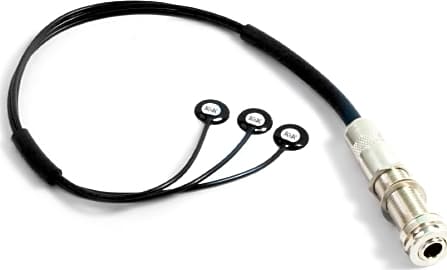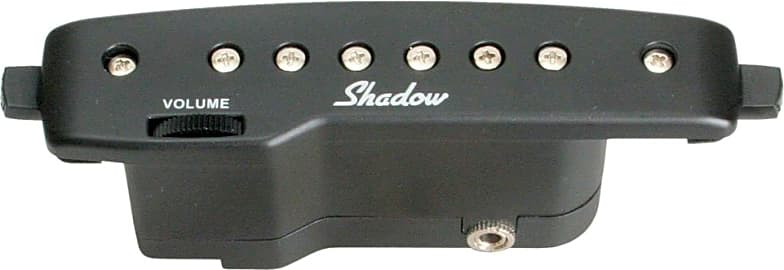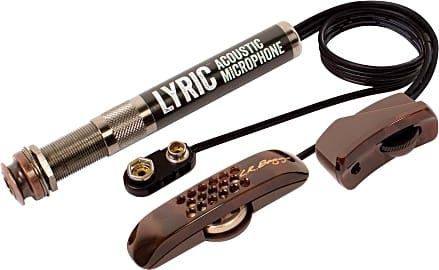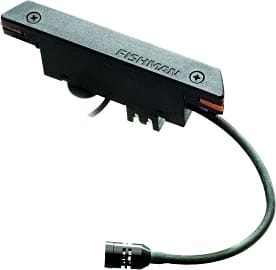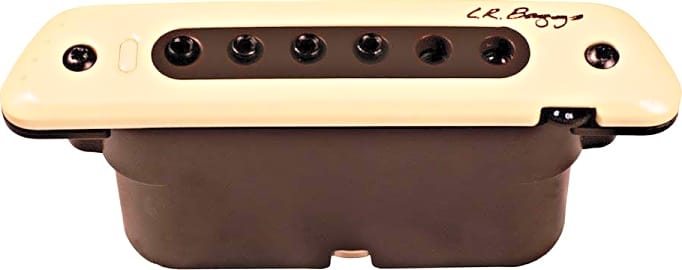The 8 Best Acoustic Guitar Pickups

This wiki has been updated 34 times since it was first published in October of 2016. Any gigging singer-songwriters know they need to boost their instrument's volume when playing in large or noisy venues. The acoustic guitar pickups on our list utilize a number of methods to provide you with a clean tone, including traditional magnets, microphones, and even piezoelectric transducers. We've ranked them here by their sound quality, durability, and ease of installation. When users buy our independently chosen editorial picks, we may earn commissions to help fund the Wiki.
Editor's Notes
May 09, 2019:
The Kepma AcoustiFex Go, a total newcomer, took the top spot on our list this year, unseating the Shadow Prestige. How did it do it? Well, basically by being exceptionally easy to install and by offering a slew of tonal controls that can be readily adjusted with the turn of a small Phillips head screwdriver. It even offers built-in effects like chorus and reverb that can make a huge difference in the quality of your sound, especially if you want to just plug into the PA at a coffee shop and not have to lug around an additional amplifier. The Shadow actually slipped to number three when all was said and done, though, as the K&K Pure Mini, despite being a simple piezoelectric system, offers a trio of transducers to absorb your ax's vibrations and turn them into a relatively complex sound. The Seymour Duncan Woody HC might have taken the biggest hit here. It definitely sounds good, but if you look closely at its installation parameters, you'll see that it's designed to live in the center of a guitar's sound hole, where the Shadow and Kempa models are a little offset, allowing for a more comfortable strum that won't see you accidentally scraping against the pickup itself with every downstroke.
How Capturing Sound Can Change It
Installing that pickup may affect the tone of the guitar itself, however, often for the worse if you do a sloppy job.
A lot of things can affect the tone of an acoustic guitar. The way a given wood expands or contracts at different temperatures and humidity levels plays a large role in the quality of its sound. That’s just one reason that responsible guitarists make use of humidifiers and dehumidifiers, depending on their climate and the time of year.
The gauge of pick you use and the strings you select for your guitar will also affect its sound, as will your style of play. Any further adjustments you make to the instrument itself are just as liable to change the tone it produces, from drilling strap locks into its body to installing a pickup for amplified performances.
That pickup may be the difference between your ability to play for a larger crowd and your relegation to only the smallest coffee shops. With a high-quality pickup installed in your acoustic guitar, you can send your song’s signal through equally high-quality acoustic guitar amps, or through a given venue’s PA system.
Of course, the physics of an acoustic guitar place the richest points of its tone just outside of its sound hole, with an additional bright spot up the neck. In expensive live and studio environments, engineers will often mic an acoustic at both of these points, as well as slightly farther into a properly tuned space if they want to capture some natural reverb.
A pickup can’t provide you with that level of audio excellence, but even if you’re playing through a microphone setup, a pickup can serve as a vital backup should one or more microphones drop out. Additionally, most acoustic guitar pickups naturally tend toward the middle frequencies, while mics at the sound hole and neck will naturally get more bass and treble respectively. A good pickup lets you or your engineer balance out the mids against these other sonic forces.
A pickup will also allow you to send your guitar through any number of effects pedals that the signal from a microphone could only reach through a very complicated setup. You also won’t find yourself anchored to a single spot on a stool. For more expressive performers who need to move around a lot while they play, a pickup is an absolute necessity.
Installing that pickup may affect the tone of the guitar itself, however, often for the worse if you do a sloppy job. Some models require modifications to the wood of your instrument, and these you should take to a professional for installation. Others secure into place with a far less invasive installation, but they can create some unwanted vibrations. Either way, make sure you take your time getting your sound just right.
The Microphone Or The Magnet
There are essentially two ways that an acoustic guitar pickup can do its job, and that method will bear heavily on its means of installation, its sound quality, and its usefulness for a given type of guitar. Let’s tackle that last point first, as it will most cleanly divide these pickups into two camps: the type of acoustic you play will largely determine what kind of pickup is right for you.
That said, the less expensive microphone pickups have all the difficulty of installation and management with little of the sound quality.
If you play a classical guitar — which is to say an acoustic guitar that uses nylon, catgut, or any non-metallic string — you’re going to need a microphone pickup. Magnetic pickups rely on magnetized coils to feel the vibrations of metal guitar strings to produce their signals. Since non-metallic strings won’t produce a reaction in a magnetic coil, such a pickup wouldn’t produce any signal to amplify.
Acoustic guitars with metallic strings can make use of either magnetic or microphone pickups. The magnetic variety is often easier to install without error, but it doesn’t capture the depth of tone that a good microphone can. That said, the less expensive microphone pickups have all the difficulty of installation and management with little of the sound quality.
A small number of magnetic pickups also include a microphone to round out their mid-heavy tone by picking up a little extra bass produced naturally in the cavity of the instrument. These may offer the best sound available, but they’re also going to combine the difficulty in installing either type of pickup.
One other option exists on the market that eschews both the magnet and the microphone. This is the transducer pickup, which utilizes a small number of electrical transducers to interpret the vibrations of the guitar body. Installation is pretty easy with these, and they’re often relatively inexpensive, but their tonal quality can’t compare with the other options on the market.
When selecting any of the pickup styles on the market, be sure to keep an eye out for volume controls. These small knobs, most often located directly on the pickups themselves, allow you to make adjustments to the tonal balance and volume of a given system, reducing any potential feedback at a moment’s notice.
A Brief History Of The Guitar Pickup
While instrument amplification has been available since the advent of the microphone in the 1870s, the magnetic guitar pickup as we know it didn’t arrive on the scene until the 1920s. That’s when a guitarist from California named George Beauchamp attempted to use the pickup assembly of his phonograph to transmit a signal from his guitar strings.
With a great deal of self-confidence, Beauchamp set out to coil his own magnets using everything from a washing machine motor to a sewing machine. After receiving a little help from Adolph Rickenbacker, who would soon transform his tool and tie business into a successful and iconic instrument company, Beauchamp created his first single-coil pickups.
Gibson soon joined the fray, introducing their bar pickup in 1935. From this point forward, the gradual electrification of the guitar was under way, with one of its most infamous milestones coming in 1965, when revered folk singer Bob Dylan played a set at the Newport Folk Festival on an electric guitar.


